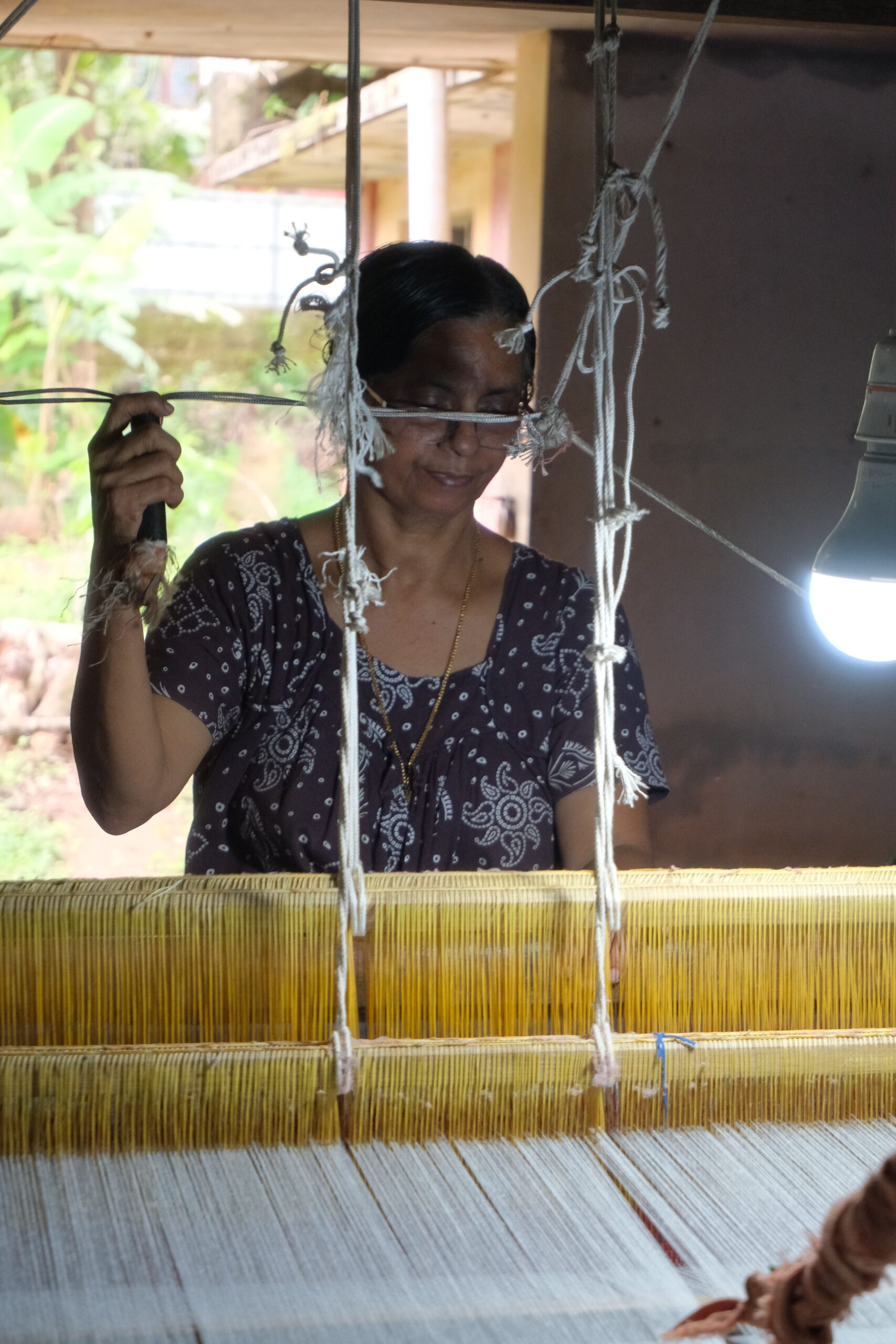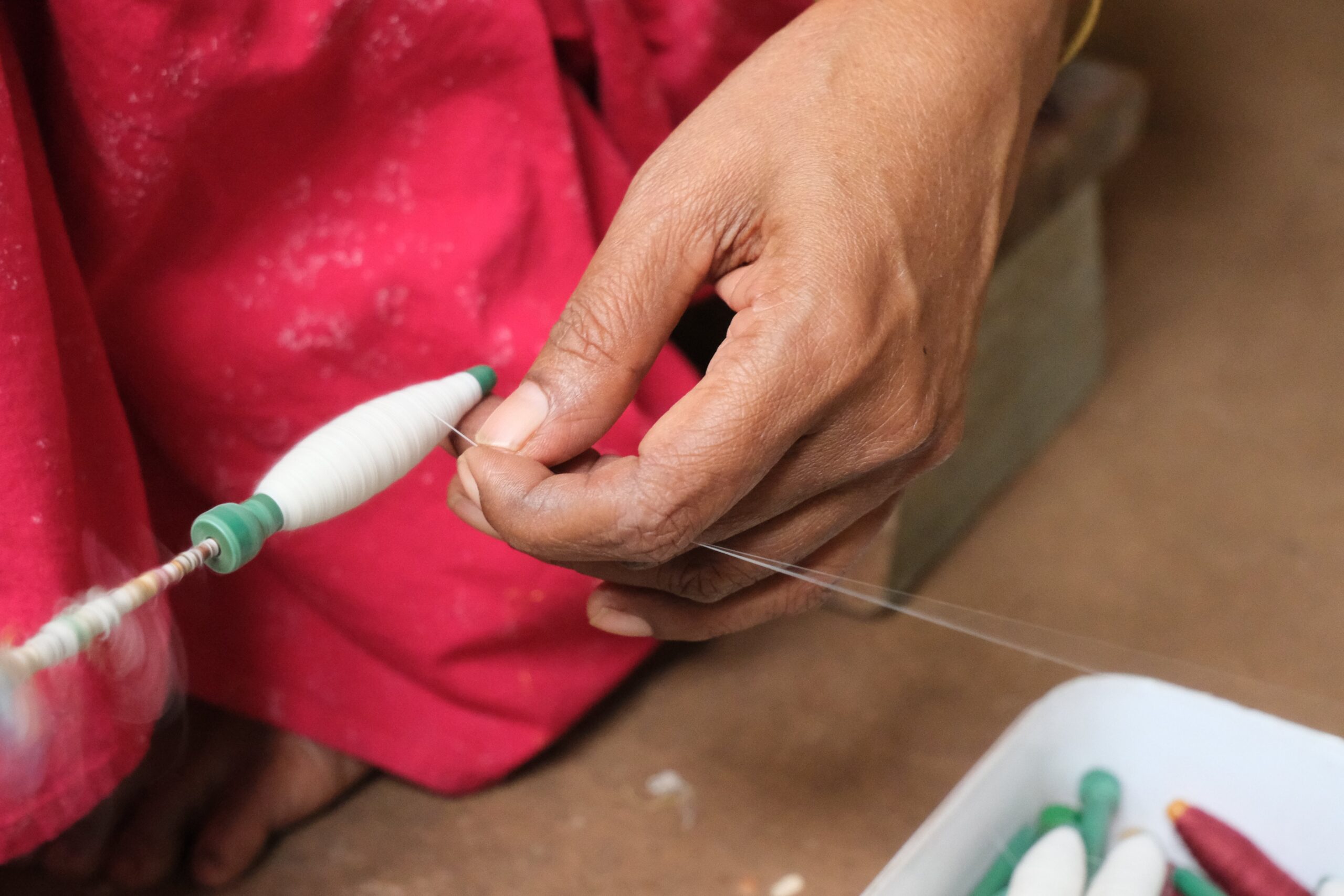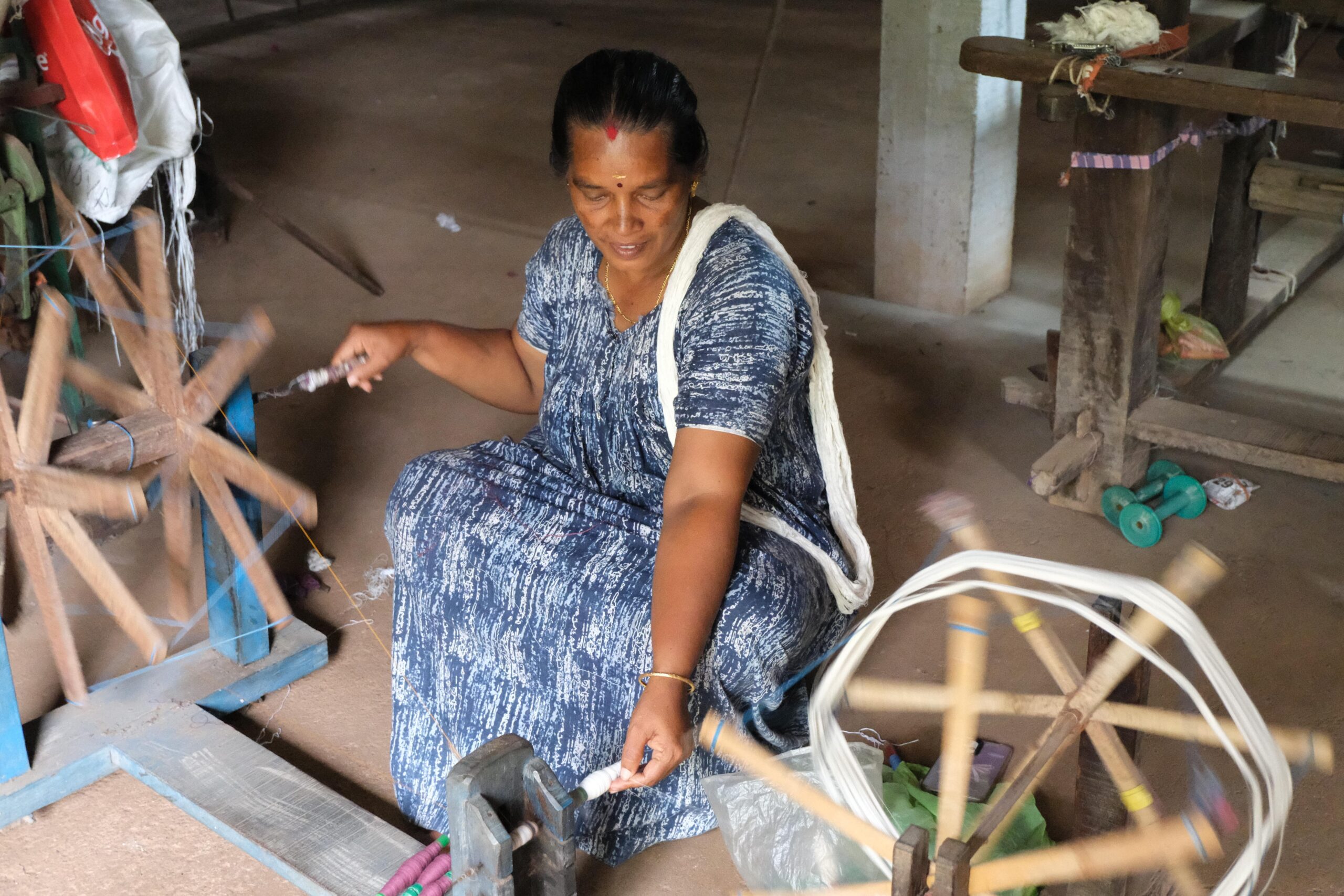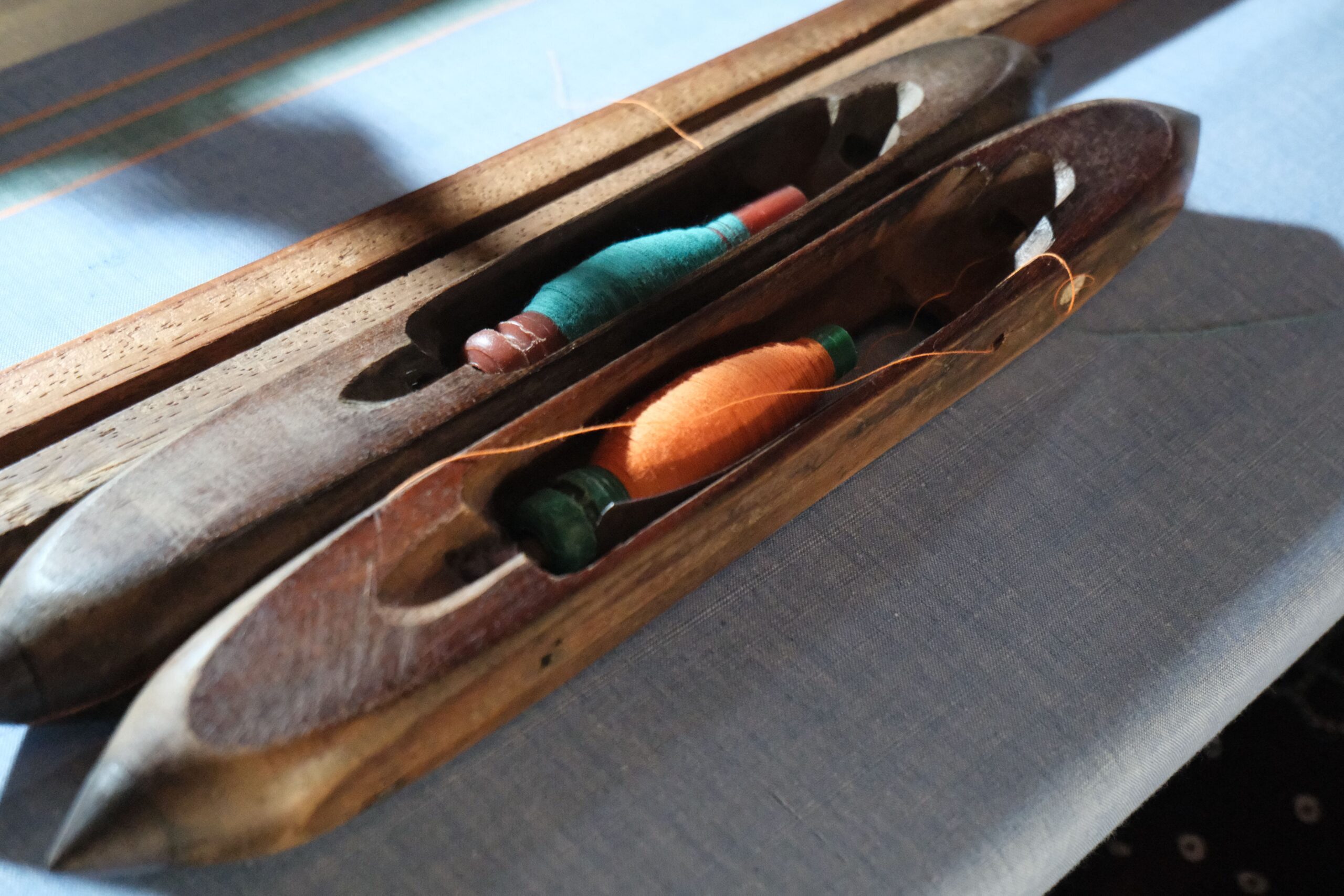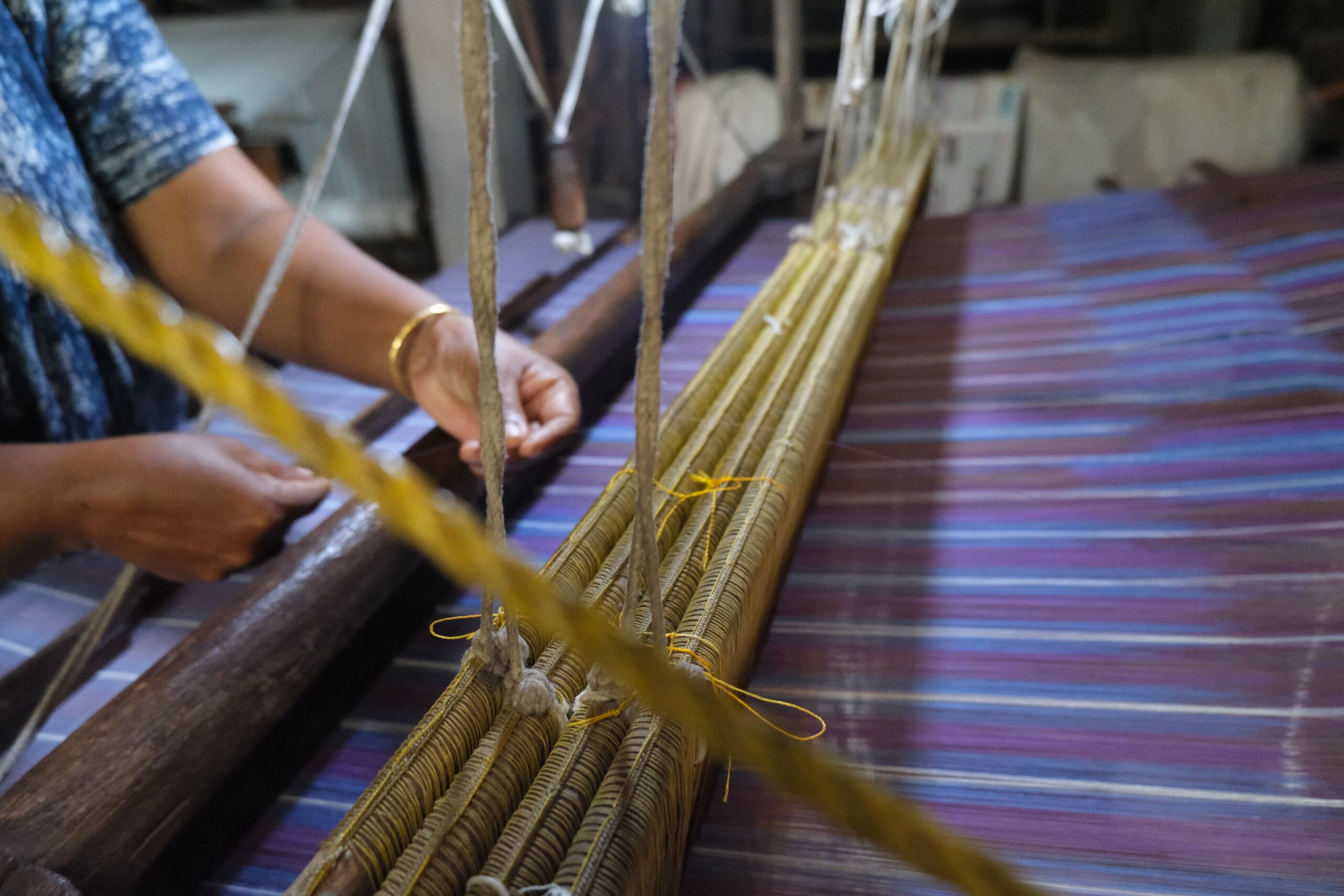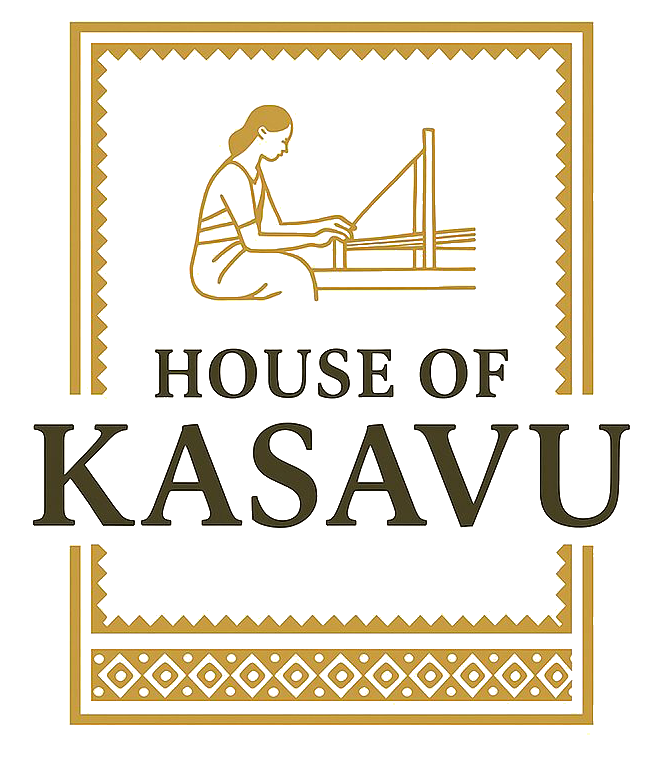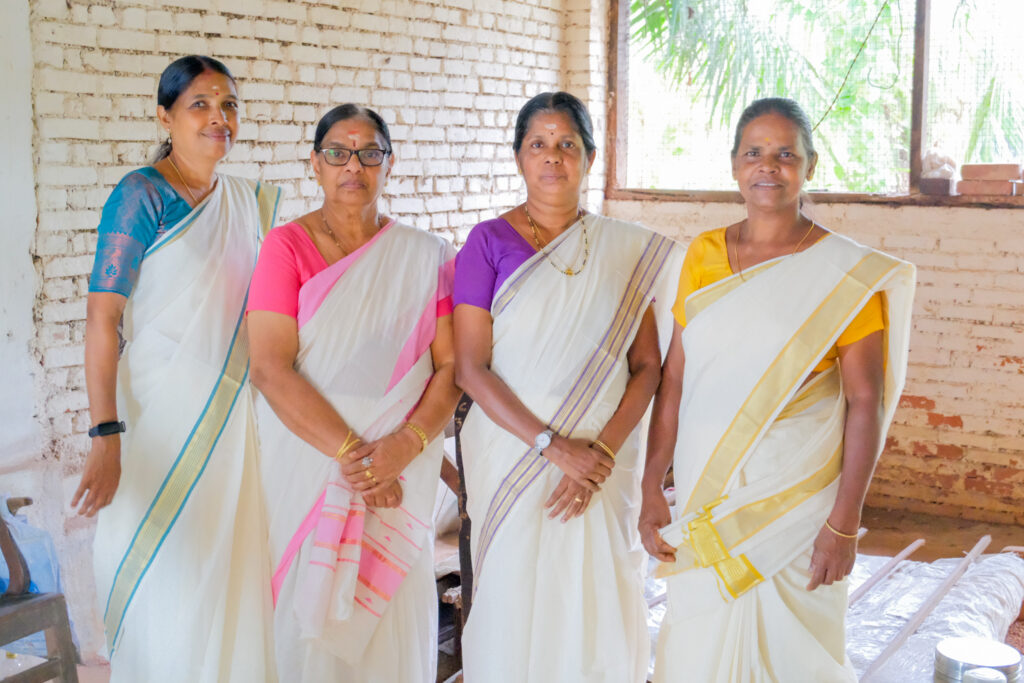HOUSE OF KASAVU
About House of Kasavu
House of Kasavu is inspired by 13 women from the Pattariyar community, weaving their way through art and a 70-year-old legacy. Together we aspire to carry forward their resilience, heritage and age-old practices. The products are crafted with fine cotton threads sourced from the oldest cotton mills in Nagercoil and Kannur. Each carefully woven piece from Chengamanad Handlooms holds stories—of artistry, womanhood, and a touch of history.
Note: all models on the site are the weavers themselves.
Meet Resilience.
Women Artisans Making The Bold Choice To Handcraft A Legacy
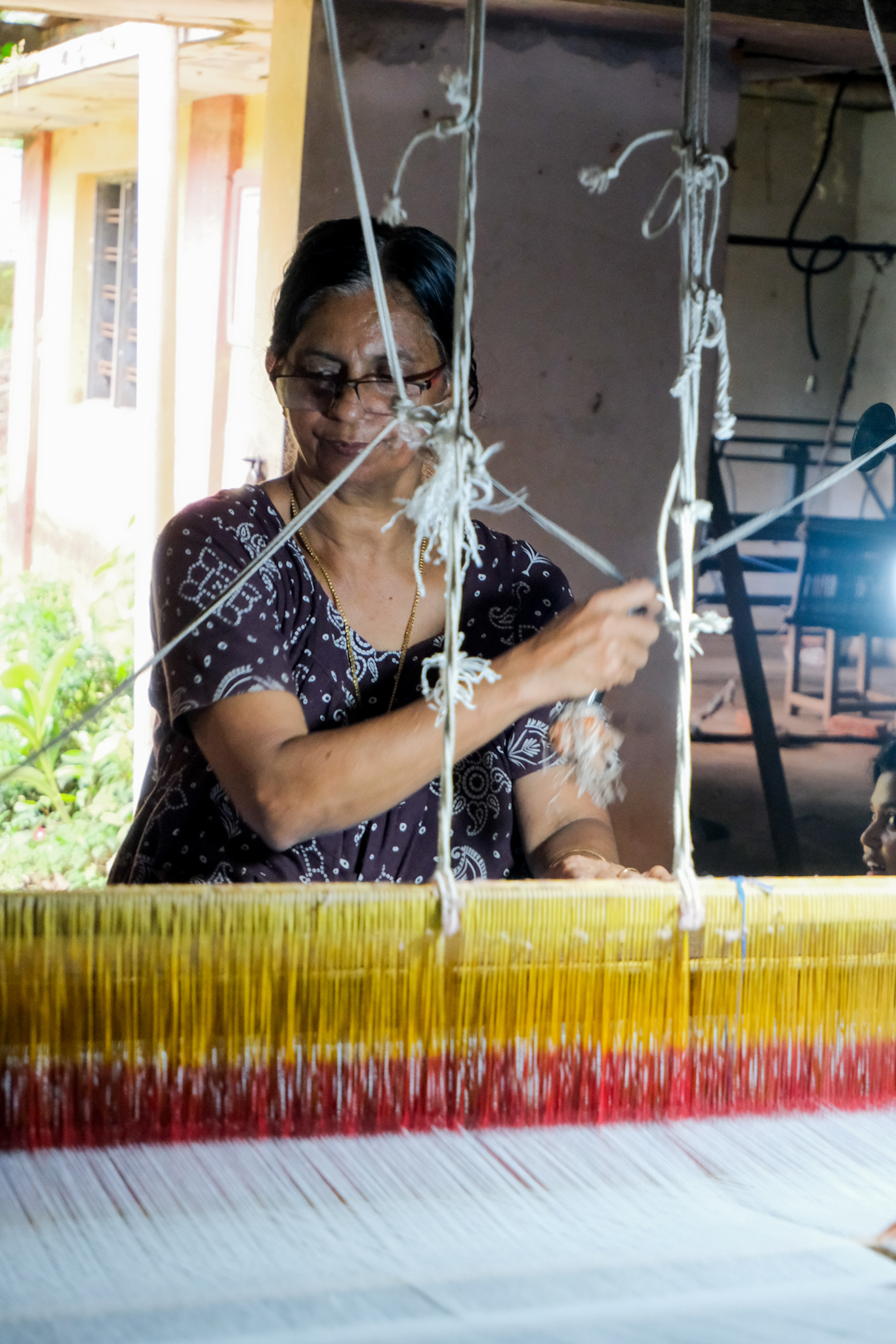

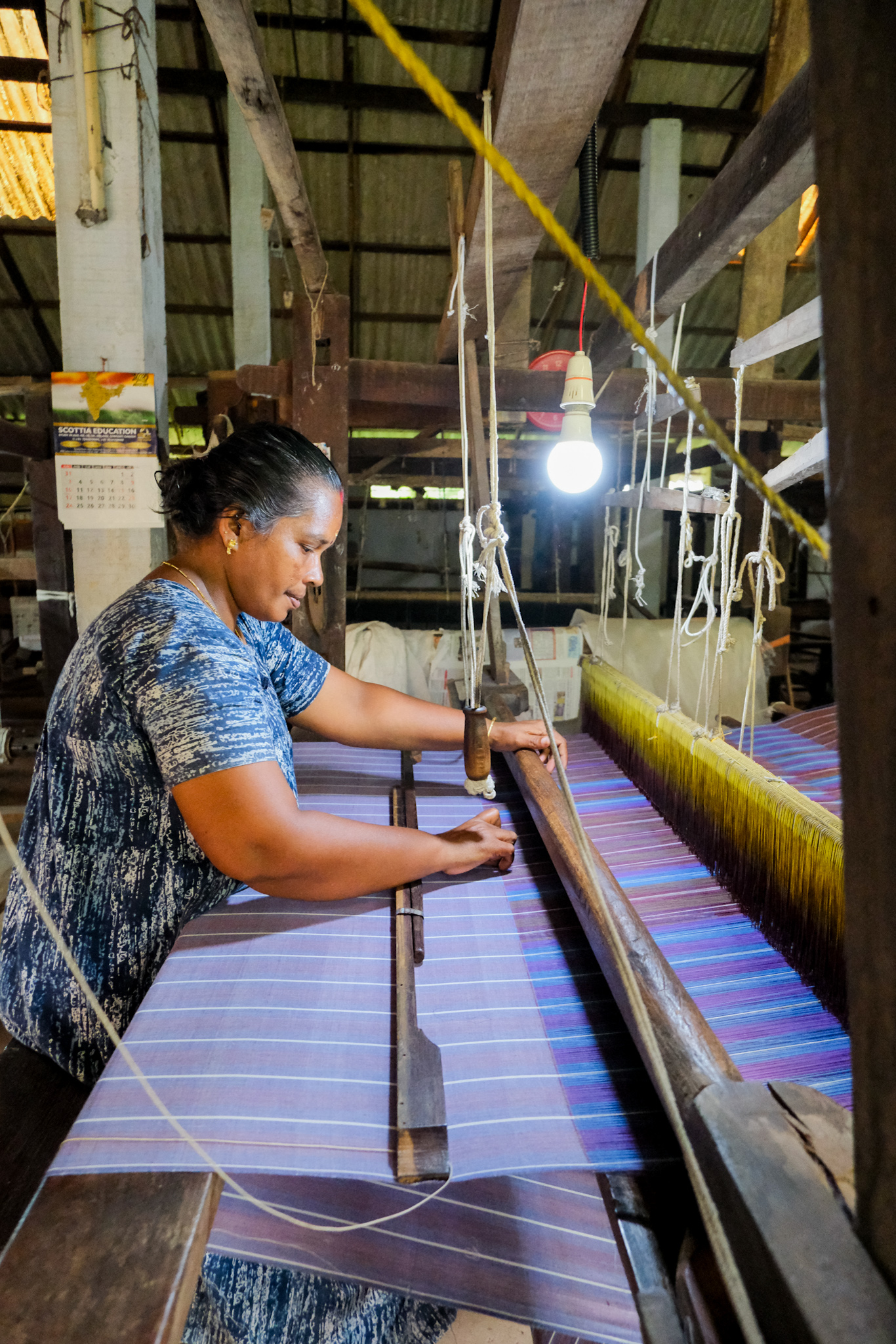
The hearty laughter and chatter of the 13 craftswomen carry over the loud grinding noise of the weaving machines.
This forms the heartbeat of the handloom society. The women have been working together for years, practising their beloved craft and looking after each other. This is their world, where their artistic spirits soar. Every day, they make the things they love, weaving each thread with hundreds of stories.
Most of them started working at a very young age, growing together in this space, learning, unlearning, and evolving as one. Now they are a family—a family that sticks together, a family to call on in urgent times, to share dreams and interests. Their whole lives are bound to their craft. They are the ones who did not give up on the difficult choice of practising their art. Instead, they chose to pursue independence, working with a passion that has triumphed over the odds in a world of fast fashion.
They are the last of a once-thriving community, holding onto a craft that many have left behind. For them, this isn’t just a job; it’s a connection to their past, to each other, and to the art that has shaped their lives. “This isn’t enough to make a living, but we continue because we refuse to let go of the only art we know,” says Sheeja, a dedicated member of the community.
Process Of Weaving
Our primary seller – Chengamanad Handlooms is very particular about the authenticity of traditional handlooming. The process starts with collecting raw cotton thread from the mills of Nagercoil and Kannur. The threads are then twisted to form a warp creating the foundation of the cloth. Using a charkha, the yarn is carefully wound onto bobbins. These bobbins play a crucial role in warping: the threads are stretched and prepared for the loom.
The threads are then treated with a starch-based adhesive. This strengthens the thread, making it more durable and easy to handle during weaving. They are then arranged on the loom with precision. Each thread is passed through heddles and reeds, which help space and align them perfectly. This creates the vertical set of threads, or the warp, ready for weaving.
The weft threads, which run horizontally, are wound onto a shuttle. The weaver then moves the shuttle back and forth through the warp, using pedals to control the movement. This rhythmic process interlaces the threads, bringing the fabric to life.
Every piece requires immense patience and coordination, with thousands of threads intricately woven together. It’s not just weaving—it’s an art that combines dedication, skill, and tradition to craft fabric that tells a story of heritage and hard work.
Credits: Many thanks to aikyam fellow Femina Fathima for thinking through the project and getting it started! And to Sumi, Bala.
